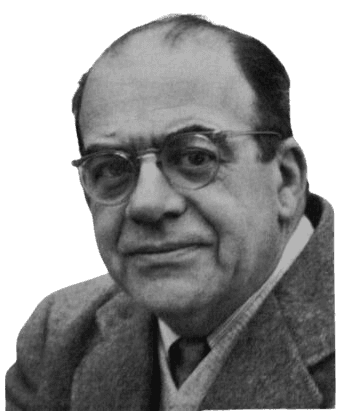Life and achievements
Early life
Panofsky was born in Hannover, Germany, on March 30, 1892, into a Jewish family of considerable affluence. Though his early years were spent in Berlin, he received his education in Hannover. His father was a Silesian mining engineer, and he had a privileged upbringing that allowed him to get a proper academic education. Panofsky's early education was in Berlin, where he enjoyed and developed an early interest in the arts and humanities.
In 1910, he completed his Abitur from Joachimsthal Sachs Gymnasium, one of the most recognized schools in Germany. He then continued with law, philosophy, philology, and art history, attending classes at the universities of Freiburg, Munich, and Berlin. He was first introduced to art history by Wilhelm Vöge, whose teachings influenced his ideas. Thus, under the supervision of Vöge, Panofsky was working on his doctoral thesis entitled The Artistic Theory of Albrecht Dürer.
Panofsky was a medical exemptee in the First World War because of an accident while horse riding. This enabled him to resume his education, and during this time, he was studying with medievalist Adolf Goldschmidt. The early years of Panofsky's career in art history were during the World War and Europe in ruins, but he started to publish his work soon. He defended his dissertation in 1915, and this work can be considered the beginning of his further interest in art theory and symbolism.
Legacy
As a result, the tradition that Erwin Panofsky left behind is firmly rooted in art history and is significantly associated with iconographic analysis. His method of approaching art, which he used to relate art to philosophy, literature, and history, has dramatically impacted art history and the humanities. The work of Panofsky revolutionized the art history discipline as the process of cataloging art but as the process of interpreting art and the context in which it was created.
His way of interpreting symbols, especially his tripartite approach to iconological analysis, remains an essential principle in art history curricula worldwide. Panofsky's impact was not limited to art history; it expanded to other fields such as philosophy, history of ideas, and even sociology, particularly with Bourdieu's borrowing of Panofsky's habitus in art. Panofsky's works are still in print, and his books, including Studies in Iconology and Early Netherlandish Painting, continue to be popular among scholars and students.
In the 21st century, it is possible to trace Panofsky's influence in the creation of academic positions and institutions dedicated to his memory, such as the Panofsky Professorship at the Zentralinstitut für Kunstgeschichte in Munich. His scholarly work is precise and profound; he does not allow himself to introduce anything without proper research and analysis, and his love for symbolism in art will keep his work alive for future generations.
Milestone moments
Mar 26, 1914
Albrecht Dürer: Doctoral Dissertation
In 1914, Panofsky finished his doctoral thesis on the artistic theory of Albrecht Dürer with the supervision of Wilhelm Vöge. The following year, he defended his dissertation, an extended study of Dürer's theories on art, specifically his theories about Italian art theories.
This early work contributed to Panofsky's rising academic recognition as a person who could decipher the hidden symbolism of the art.
It also signified the start of his lifelong interest in the Renaissance and medieval art.
In his dissertation, he began to develop the ideas that he would later use in his study of iconography and the symbolic meaning of art.
It also prepared him for his academic career, which saw him teach in Germany and the United States.
Jan 26, 1926
The University of Hamburg recruited him as an appointed professor.
Panofsky joined the University of Hamburg in 1926, where he was to teach as a professor of art history. This was a turning point in his career since it enabled him to write significant works on art history and critical theory.
During his stay in Hamburg, he was able to join a company of intelligent people, such as philosopher Ernst Cassirer.
His work during this period included the seminal Idea, an art theory book published in 1924 that sought to explain the philosophical aspects of Renaissance art.
During his stay in Hamburg, Panofsky also started working with the Warburg Institute, thus extending his academic connections.
Feb 8, 1933
Forced to Leave Germany
When the Nazis came to power in 1933, which made Panofsky a Jew, he was dismissed from his position in Germany. His academic experience in Germany was relatively short, and he had to choose between leaving and studying in the States.
The former migrated to the United States, where he started teaching at New York University.
This period of exile was also beneficial because it paved the way for his permanent relocation to America, where he was able to build his career.
The migration to the United States helped him to avoid the tragedies of the Nazi regime, and it created new possibilities for cooperation with American scientists.
Oct 29, 1935
Selected to Join the Institute for Advanced Study at Princeton
In the following year, 1935, he took up a highly paid offer at the Institute for Advanced Study, Princeton, New Jersey. This appointment may be regarded as the start of the most productive period of his working life.
While at Princeton, Panofsky interacted with some of the most brilliant minds of his generation, such as Albert Einstein.
Some of the works he produced at this time were Studies in Iconology, published in 1939, and Early Netherlandish Painting, published in 1953, which are now considered classics in art history.
The appointment to Princeton offered Panofsky the means and the climate to conduct research that would revolutionize the study of history for generations to come.
